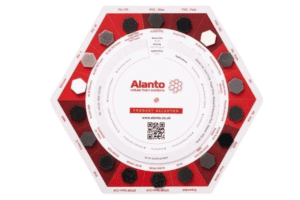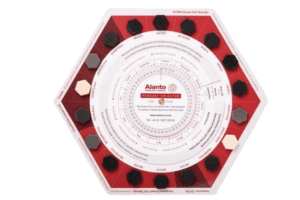Neoprene Sheeting: A History of Innovation and Modern Applications
In this comprehensive guide, we’ll explore the evolution of neoprene sheeting in the UK, its current applications, and why it’s become an integral part of modern life.
What are neoprene’s origins?
DuPont scientists made their groundbreaking discovery in 1930. The post-WWI boom in the motor industry strained natural rubber supplies, driving a search for synthetic alternatives. Furthermore, when Professor Julius Nieuwland mentioned a rubber-like material he’d stumbled upon, DuPont’s research director, Elmer Keiser Bolton, seized the opportunity. Then, a team of 28 DuPont scientists took on the challenge of commercialising this new substance.
However, though the initial material lacked elasticity, further refinement yielded a synthetic rubber with the key traits we associate with neoprene today: flexibility, resistance to oil, UV rays, and air. Interestingly, DuPont scientists would later also invent nylon, Teflon, and Kevlar.
Fun Fact: Originally dubbed “DuPrene,” the name was changed to “Neoprene” in 1937. Neoprene holds the distinction of being the world’s first synthetic rubber.
What are neoprene’s properties today?
Modern neoprene comes in a wide array of variations, each with unique properties and purposes.
We measure these variations through characteristics like:
-
- Density
- Compression Deflection
- Compression set
- Shrinkage
- Shore hardness
- Elongation
- Temperature range
- Water absorption
- Tensile strength
- Flame resistance
- Environmental protection
Alanto’s neoprene specifications boast excellent recovery following compression, making it flexible and versatile.
What are the applications of neoprene?
Since 1930, Neoprene has achieved widespread use, particularly in the automotive, marine, packaging, logistics, and construction sectors. Additionally, its most famous application is likely wetsuits, where the closed-cell structure prevents the intrusion of air, dust, chemicals, and UV rays.
How is neoprene used in automobiles?
Neoprene excels in automotive window/door seals, hoses, power transmission belts, and braking/steering components. Moreover, its flexibility, heat tolerance, and chemical resistance make it well-suited to the unpredictable conditions inside a vehicle.
What are the other 21st Century Uses?
Additionally, neoprene’s ozone resistance and tensile strength make it ideal for various outdoor applications.
Here’s a snapshot:
-
- Gaskets across industries
- Conveyor belts
- Vibration mounts
- Cable jackets
- Laptop sleeves
- Medical braces
Discover Alanto’s Neoprene/EPDM blend [https://www.alanto.co.uk/neoprene/]
Source: http://www.iom3.org/materials-world-magazine/news/2016/apr/01/invention-Neoprene


